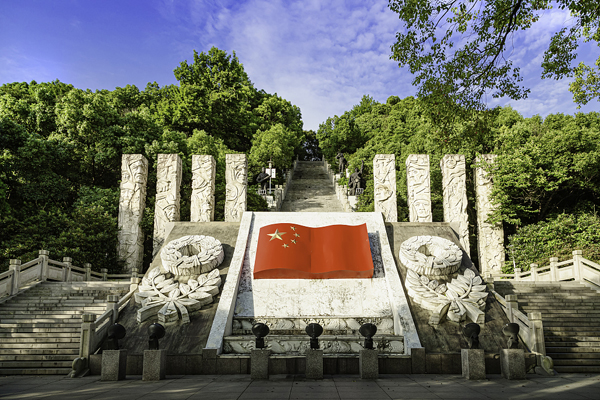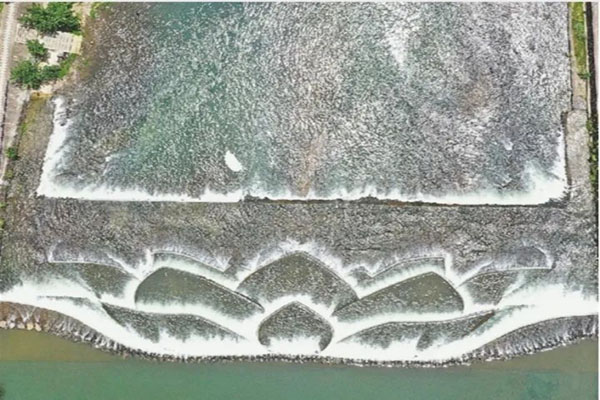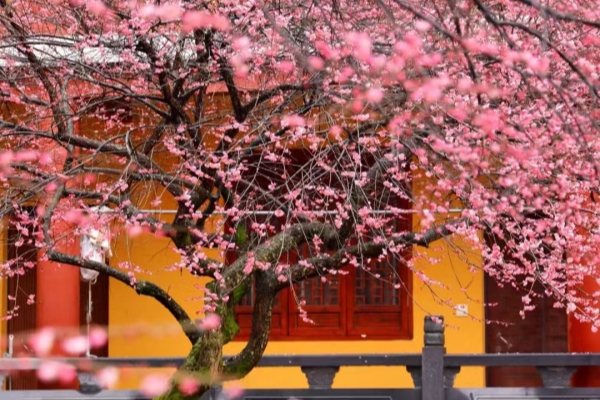Founders' spirit continues to inspire

The Martyrs Cemetery on Yijiangshan island in Taizhou, Zhejiang province. CHINA DAILY
As the birthplace of the "red boat spirit", the eastern province of Zhejiang embodies the country's revolutionary hallmarks of innovation, hard work and devotion.
For the Communist Party of China's 91.9 million members, Nanhu Lake in the city of Jiaxing is far more than just a place with attractive scenery – it is the physical embodiment of the CPC's founding spirit.
During the first three days of the recent May Day holiday, the Nanhu Revolutionary Memorial Hall saw 22,000 visitors as the nation races toward July and the 100th anniversary of the Party's establishment.
"The unique cultural connotations of Nanhu Lake are the main reasons tourists are attracted. The CPC was born in a red boat on Nanhu Lake, which is the glory of Jiaxing," said Jin Qinlong, director of the city's tourism bureau.
In 1921, the First CPC National Congress was concluded on that famous red boat on the lake.
It was there that the 13 delegates announced the Party's official founding, with the boat becoming a symbol of the courageous and pioneering spirit of the Party's early leaders.
That meeting encapsulated China's revolutionary spirit.
In October 2017, the CPC's newly elected top leadership, headed by General Secretary Xi Jinping, visited the site and drew up a blueprint for the country's development in the coming decades.
"We cannot forget the road that we have taken no matter how far we march," Xi said during the visit.
That red boat spirit has strongly influenced the development of Zhejiang, an economic powerhouse that has evolved into a cradle of scientific and technological innovation.
Innovation
Jiaxing has played an active role in the construction of the Yangtze River Delta G60 Science and Innovation Corridor.
The corridor, a high-tech manufacturing zone connecting Shanghai and eight other cities in the delta, is included in the region's integration plan and is intended to drive its technical and economic development. Initiated by Shanghai's Songjiang district, the G60 corridor takes in the Zhejiang cities of Hangzhou, Jiaxing, Jinhua and Huzhou.
In recent years, Jiaxing has been promoting the construction of technology innovation platforms.
The Zhejiang University Yangtze River Delta Smart Oasis, co-sponsored by the Jiaxing government and the university and located in the Xiangfudang Innovation Green Valley, has set up five fund management companies and 12 partnership enterprises with total capital of about 4 billion yuan ($622 million).
Swan Lake Future Scientific Town in Jiaxing's Xiuzhou district opened in April last year. It has attracted Apple Inc's major supplier Foxconn, along with Minth Group, a leading supplier of exterior auto parts, and German auto parts supplier Hella Group.
The red boat spirit is also inspiring rural regeneration in Zhejiang's northern regions. Lujia village, located in Anji county, Huzhou city, used to be a poor, dirty and disorderly settlement.
In 2003, when Zhejiang launched the Green Rural Revival Program, Lujia was one of the first places to take action.
The village mobilized all its residents to boost its environment and infrastructure by regenerating polluted waterways, improving sewage disposal and introducing garbage classification projects.
Adhering to the concept that "lucid waters and lush mountains are invaluable assets", the village has taken on a completely new look after developing leisure agriculture and rural tourism.
To date, 18 family farms have been set up, eight of which are conducting trial operations, with total investment of more than 2 billion yuan.
Lujia has been transformed into a picturesque, garden-like scenic spot. Since 2018, the village has received nearly 500,000 tourists per annum.
Last year, the combined assets of the village and the residents' per capita net income reached 290 million yuan and 47,100 yuan respectively.
The coastal city of Zhoushan in Zhejiang is carrying forward the devotional trait of the red boat spirit by helping Dazhou, a city in the southwestern province of Sichuan, shake off poverty.
In 2018, in response to the government's anti-poverty campaign, Zhoushan's Dinghai and Putuo districts started providing assistance to Dazhou's Xuanhan and Wanyuan counties.
Since then, the counties' human resources and social security departments have worked together to alleviate labor shortages in Zhoushan by sending workers from Dazhou.
Zhang Bin, from Dazhou, said he never dreamed he would become a sailor in his 40s and earn a good salary in Zhoushan, but he has, thanks to a sailor employment program launched by the Zhoushan Marine School in October 2018. The program provides professional training courses for Dazhou residents to help them find jobs.
He Zhongwei, mayor of Zhoushan, said the city has always regarded poverty alleviation cooperation between East and West China as one of its primary duties, and the poverty relief efforts in Dazhou have produced strong results in recent years.
He promised that Zhoushan would continue to support Dazhou by helping it to develop local industries, promoting their products and providing jobs for Dazhou natives.
Over the past three years, Zhoushan has provided 219 million yuan to help lift Dazhou out of poverty, Zhoushan Daily reported.
By the end of 2019, Xuanhan and Wanyuan had been removed from the national list of poverty-stricken counties.
Zhoushan focused its poverty alleviation efforts on developing industries in the two counties, and 1,780 hectares have been set aside for the cultivation of tea leaves, plums and vegetables, benefiting 55,000 impoverished people.

 Lishui establishes intelligent biodiversity monitoring system
Lishui establishes intelligent biodiversity monitoring system New fungus species discovered in Qingyuan
New fungus species discovered in Qingyuan Lishui transforms weirs to aid fish migration
Lishui transforms weirs to aid fish migration